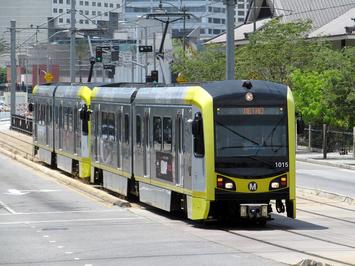
SUVs “ruined the environment,” says to a rather shrill article in the Guardian that was also reprinted in Mother Jones and other publications. It reached this conclusion based on a study showing they were the “second largest contributor to the increase in global carbon emissions from 2010 to 2018.”
The author of the article, who frets that people with SUVs also have a hard time finding a place “to park the things,” obviously hasn’t looked at an SUV lately. No more are all SUVs Chevy Suburbans or Ford Excursions. Most of them are about the same size as regular cars, just a little taller. Nor are they all four-wheel drive gas guzzlers; in fact, they only use a little more energy than regular cars.
It’s the extra height that makes them attractive to people. A taller car allows drivers to see further down the road. Occupants also sit higher, like at a dining table, rather than low with their legs sticking out in front of them, like a sports car. Thus, they are both more comfortable and easier to drive.
In a very real sense, all cars made before World War II were, by today’s standards, SUVs. They were tall, most of them were boxy, and they didn’t get very good mileage. Only a few pre-war cars, known as sports cars, were low to the ground.
After the war, auto manufacturers started making all cars like sports cars. Occupants in the front seats had a choice of sticking their legs out in front almost as if they were sitting on the floor or having their knees almost as high as their chin. Riders in the back usually didn’t have that choice: they didn’t have much leg room at all. Yet this became the standard design, and the few exceptions, such as Kaiser’s Jeeps, became a separate category.
Today, thanks to improvements in engine technology and streamlining, most SUVs get pretty good fuel economy. In 2017, the latest year for which data are available, the average light truck (which includes SUVs, pickups, and full-sized vans) used the same amount of energy per vehicle mile as the average car did in 1990 and used only 11 percent more energy than the average car in 2007.
In addition, the average light truck (partly because of full-sized vans) is a little bigger than the average car, so the National Household Travel Survey found that light trucks carry more people, on average of 1.82 for light trucks vs. 1.54 for cars. On net, light trucks use about 17 percent more energy per passenger mile than cars.
The Guardian article claims that the greenhouse gas emission from increased SUV use equalled 544 million tons of CO2 since 2010. This is partly offset because CO2 emissions from cars declined by 75 million tons. But if a new SUV uses only 11 percent more fuel per vehicle mile than a ten-year-old car, you wouldn’t see this huge difference if it were just a matter of people trading in their older cars for new SUVs.
Instead, most of the increase is due to people who didn’t have cars buying SUVs instead of regular cars. In other words, total worldwide auto ownership and driving has increased, which would have resulted in more CO2 emissions whether they were from SUVs or cars. This increase isn’t happening in the United States or western Europe; instead, it is mostly in Asia.
The Guardian makes it plain that it believes people who drive SUVs should be “shamed.” But I suspect, if Asians are driving a lot of SUVs, it is for the same reason we do: they are more comfortable and easier to drive than sports cars.
How did people who didn’t have cars get around before they bought an SUV? At least some of them were riding transit. In most of the United States, someone who switches from transit to an SUV is reducing, not increasing, their carbon footprint. That’s because, as documented here late last year, transit is an energy hog. Nationwide, transit uses more energy per passenger mile than the average light truck. New York, San Francisco-Oakland, and Honolulu are the only major urban areas were transit uses significantly less energy than an SUV. (In a few others, including Atlanta and Portland, the two are about tied.)
So the real shaming should be on people who ride transit and advocate transit expansions that will only make it even less energy efficient. If you care about greenhouse gases and you ride transit, stop riding it. If everyone stops riding it, they will stop running it (we hope), and a large producer of greenhouse gases will cease to emit them into the atmosphere.
This piece first appeared on The Antiplanner.
Randal O'Toole (rot@ti.org) is a Cato Institute Senior Fellow working on urban growth, public land, and transportation issues. He is the author of numerous Cato papers and has also written for numerous other national journals and newspapers.
Photo credit: Pi. 1415926535 via Wikimedia under CC 3.0 License.












